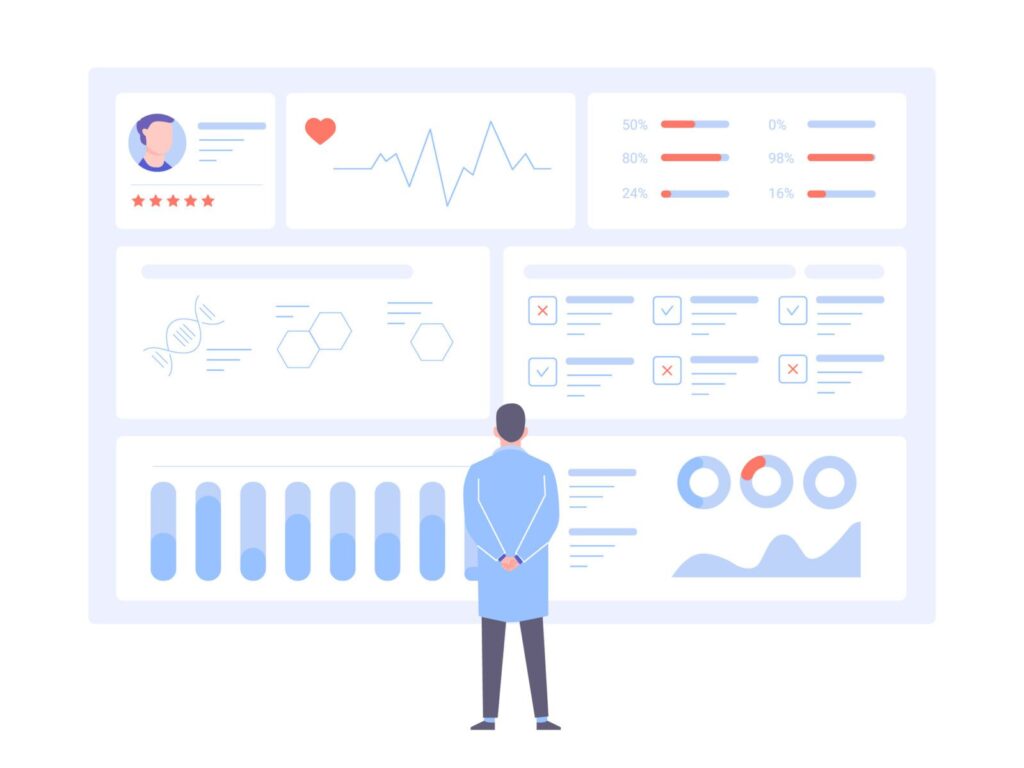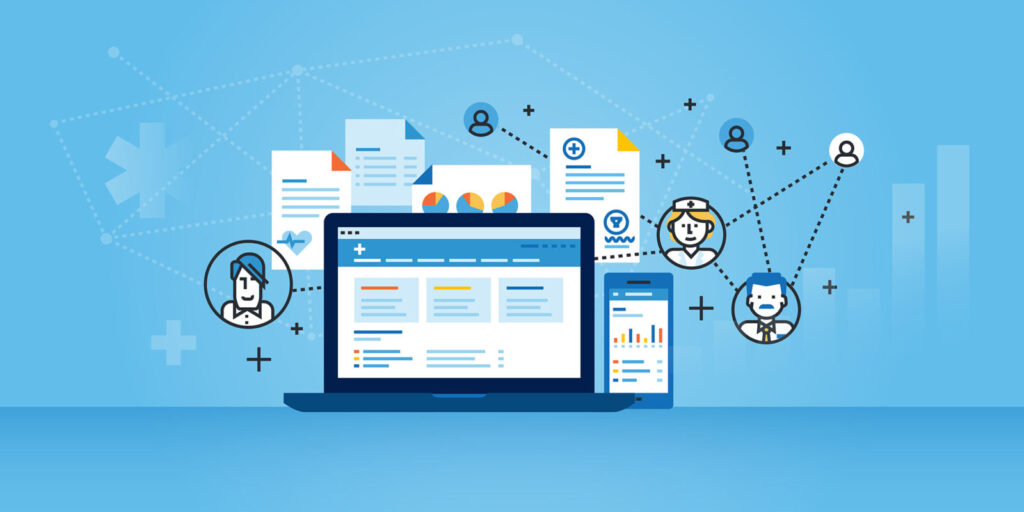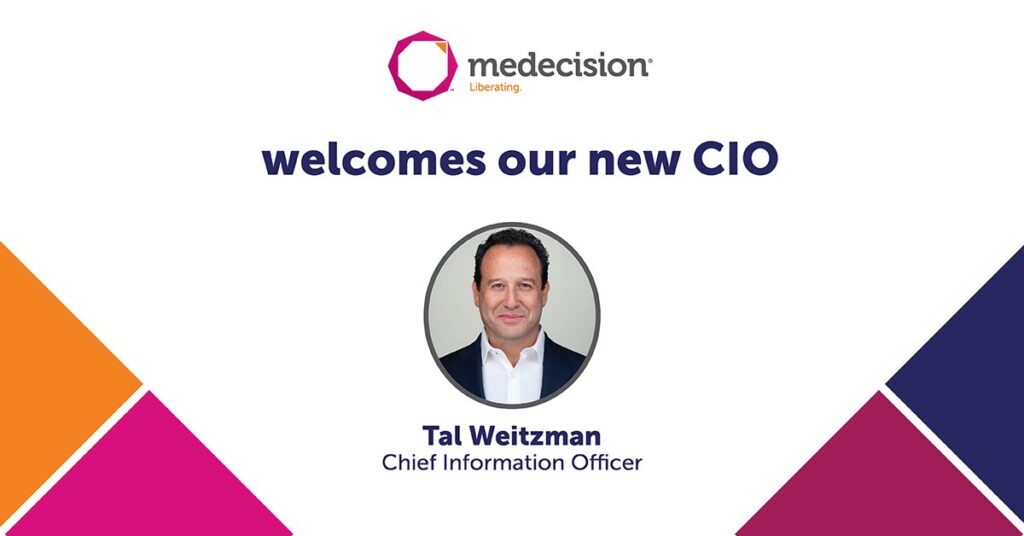
Clinical informatics is leading the way in the much-needed transformation of healthcare.
Information is everywhere. It has been estimated that the modern human brain is exposed to anywhere from 34 gigabytes to more than 74 gigabytes of information a day. But making sense of this ongoing information overload is another issue entirely!
Making Data More Useful
Today’s healthcare clinicians have access to more data than ever before, from electronic health records to diagnostics, visual images, remote patient monitoring devices and more. While data analytics scrutinizes the information for trends and patterns, clinical informatics—also known as health informatics—makes it practical and useful, combining it with technology to provide higher-quality—and more efficient—care. (Data analytics is an indispensable element of informatics, which crosses an array of disciplines that also includes healthcare management, information science and technology.)
Increasingly, informatics is leading the way in the much-needed transformation of healthcare, in areas ranging from medical, nursing, pharmacy and nutrition to physical therapy, dentistry and research. Here’s how.
Keeping It Personal
The usefulness of data depends on various factors, including:
- Accuracy. To what degree does the information present a true picture of a patient’s condition? Can it be relied upon when making important healthcare decisions?
- Thoroughness. How complete is the data? Is there missing information that must be filled in from another source?
- Relevance. What does this information have to do with the issue at hand? As the healthcare profession becomes more attuned to holistic approaches, the role of factors such as social determinants of health (SDOH) in one’s overall health has become clearer.
- Timeliness. Is the picture that has been painted the latest available, or does it need to be updated? Are real-time alerts employed to keep patients, providers and others in the loop?
At the heart of all these factors is the need for personalization, which recognizes that a care plan should be tailored to the unique needs of each individual.
Expanding Data Sources
In a recent blog post, we discussed various types of data that can help health plans address a member’s health sooner, thus driving more personalized engagement and improving health outcomes and patient satisfaction. In addition to the traditional claims data, those rich sources include data from admission, discharge and transfer (ADT) messages; clinical information from electronic health records; and social determinants of health (SDOH) data.
Those same sources are valuable to physicians, hospitals, health systems, care management companies and everyone else involved in a patient’s care. Effective partnerships between providers and care managers are but one example of how clinical informatics is changing the game.
How Clinical Informatics Benefits Patient Care
As previously mentioned, data analytics is a key part of clinical informatics. An article published by the University of Pittsburgh’s School of Health and Rehabilitation Sciences detailed three types of data analytics and how they can help answer many healthcare questions. Descriptive analytics uses historical data to draw comparisons or discover patterns; predictive analytics uses current and historical data to make predictions about the future; and prescriptive analytics can help determine the best course of action.
Armed with such information, clinical informatics can benefit individual patient care and population health management in various ways, ultimately contributing to the bottom line.
- Improved care coordination and shared knowledge. Clinical informatics provides an easier way for knowledge about patients and their diseases, treatment plans, medications and more to be easily shared. This, in turn, can improve care coordination. In just one hospital stay, a patient may have lab work and X-rays, speak with a nutritionist or therapist, and see several specialists. Unless those conversations are held in tandem, poor communication can occur. Interoperability is essential to ensure that the right information is getting to the right people at the right time. With health informatics, care coordination is easier, breaking through silos and other barriers.
- Increased patient participation and satisfaction. Patients who take an active role in their own healthcare are more likely to follow medication regimens and other doctor recommendations. Access to care portals helps them to keep track of symptoms, medications, appointments and other information, while interacting more easily with doctors and nurses, strengthening those relationships.
- Better outcomes. Add it all up, and the result is better outcomes. More informed diagnoses. Safer, higher-quality care. A decreased chance of error. Optimized workflows. The increased efficiency of coordinated teams effectively using enhanced electronic medical records (EMRs).
- Reduced costs. It all makes sense from a financial perspective as well. Optimized workflows mean reduced administrative burdens. Better care means fewer costly readmissions. Whether you are managing the health of an individual or a population, risks are identified sooner so that preventive care can help avert hospitalizations or emergency department visits.
Aerial, Medecision’s HITRUST CSF®-certified, SaaS solution, was created to drive integrated healthcare experiences and collaboration; continuous care across the patient journey; quality and performance management; support for medical, behavioral and social determinants; appropriate utilization; and active, engaged and empowered consumers.
Medecision is proud to philanthropically sponsor a clinical informatics fellowship at ChristianaCare. Learn more here.


About The Author: Medecision
Medecision is a leader in cloud-based, data-powered healthcare solutions, enabling risk-bearing entities to achieve improved health outcomes, optimized medical costs, reduced administrative costs, and personalized engagement. Our Aerial platform supports over 10% of the U.S. population, marking a significant milestone in advancing healthcare efficiency and effectiveness.
More posts by Medecision